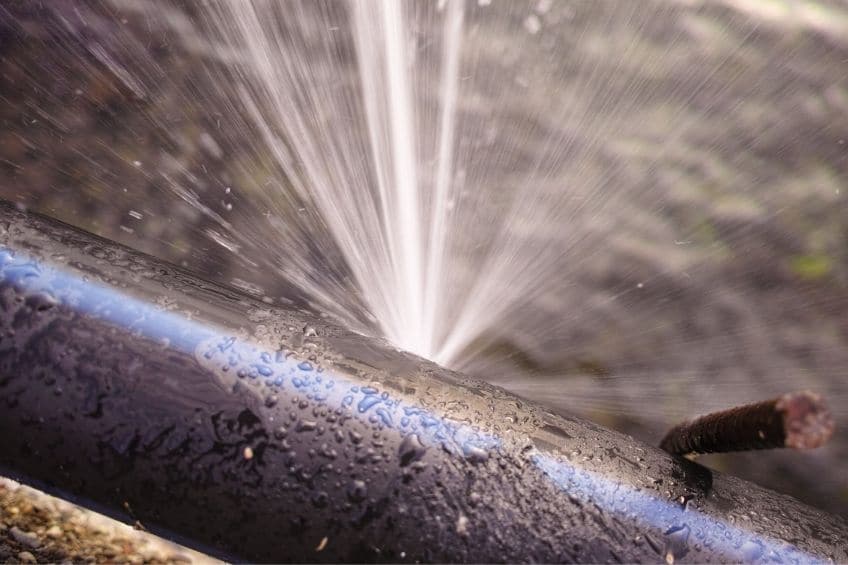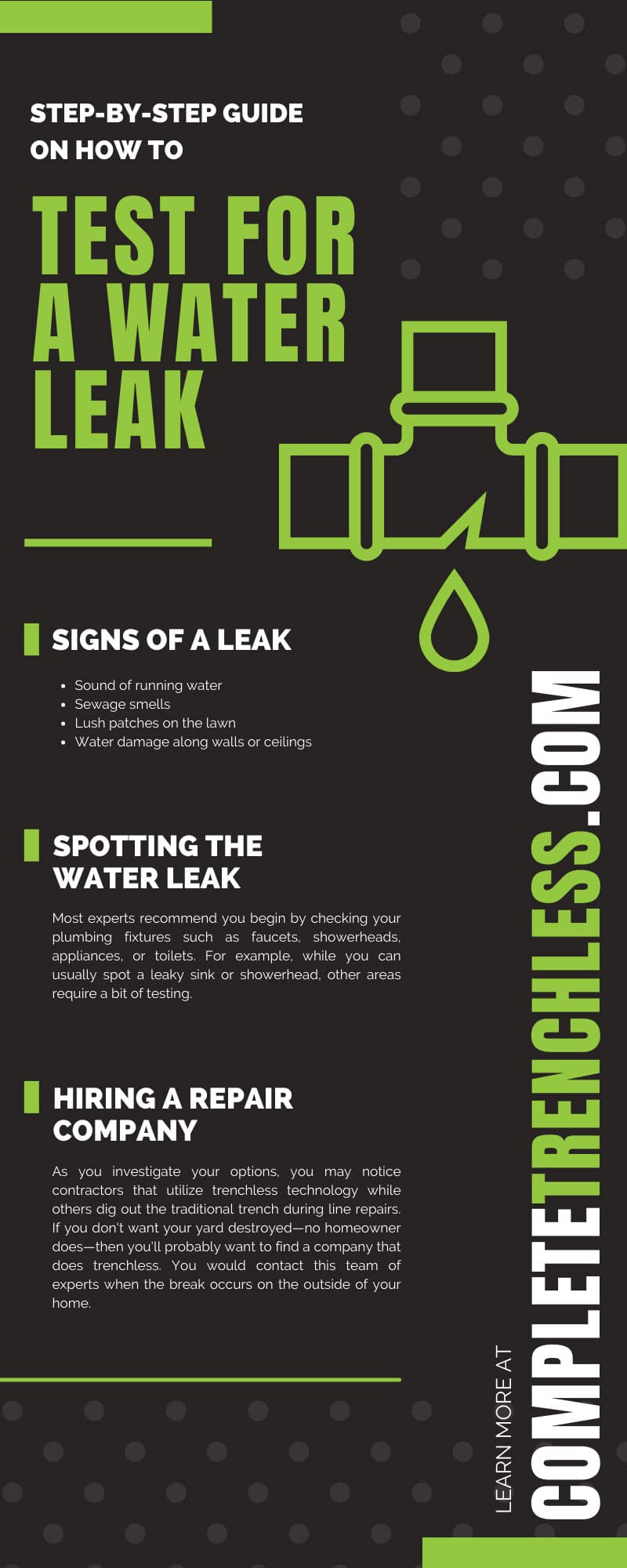Step-by-Step Guide on How To Test for a Water Leak

When your water bills seem far higher than average, you may have a leaky pipe, which is problematic because leaks waste your money and water, all while damaging your home. Water damage can leave stains and ruin your flooring and even the ceiling if the pipe bursts. Reduce the risk of a burst pipe altogether by noting the signs of wear in your home with this step-by-step guide on how to test for a water leak.
Signs of a Leak
Your water bill could be high for various reasons, so one higher bill doesn’t always indicate a problem with your line. However, if this spike occurs or continues on future bills, you should call a plumber. Other signs of a leaky pipe include:
- Sound of running water
- Sewage smells
- Lush patches on the lawn
- Water damage along walls or ceilings
If you notice any of these signs alongside a higher water bill, then there’s a good chance you have a leak and should call a plumber to check things out.
Spotting the Water Leak
A high water bill can create reasonable concern, specifically when you can’t think of a reason it would be higher—your water consumption has remained stable. So, while you may not need to call an expert yet, you should check for a leak by using a few simple tests to rule out what’s causing the problem.
Most experts recommend you begin by checking your plumbing fixtures such as faucets, showerheads, appliances, or toilets. For example, while you can usually spot a leaky sink or showerhead, other areas require a bit of testing. Likewise, checking appliances for a leak typically means ensuring valves and hoses remain properly connected.
Testing Your Toilets
After checking your sinks and showerheads, the next step is to test your toilet for a leak, and doing so is a quick and simple test:
- Remove the lid of your toilet. Listen for a hissing sound and evaluate parts.
- Put a few drops of food coloring into the tank and leave it for several minutes.
- Check the tank and bowl. If food coloring is now also in the bowl, you have a leak.
Ruling out all possible causes for your high water bill or other signs of leakage make repairs a bit easier if you have to call a plumber. As you try to locate the possible leak, it’s also important to note that you may have to try additional tests if your toilets and faucets show no signs of breakage.
Check the Water Tank
Locate your water tank or boiler and evaluate the valves for signs of a leak, but also check the ground around it for possible puddles of water. Call a specialist for a necessary repair if you notice either of these or hear a hissing sound.
Testing the Meter Line
This test has more steps than the previous method but is a cost-effective way to check for a water leak, so it’s worth trying if the other tests left you empty-handed. First, locate your home’s water meter; for some, this is inside the house, but other times it’s located in the yard.
Once you’ve found the meter, take note of what number the dial is on, as this is a measure of usage. After jotting this number down to eliminate the risk of human error, shut your water off and leave it off for one to two hours.
When your one to two hours is up, recheck your water meter. If the reading is higher than your initial note, leave the water off and call a plumber. Don’t procrastinate on issues like this. Although you may have a small leak now, if the pipe bursts, you’ll have a lot more than a high-water bill to worry about.
Pro-Tip
While your water is off, listen for the sound of running water; this indicates a leak. If you don’t hear anything, then there’s still a chance the problem is one of your plumbing fixtures. However, if you feel unsure or have concerns, calling an expert to look things over is always best.
Hiring a Repair Company
So, the meter test indicated that there’s a leak somewhere in your line. What now? The first step is to find a plumbing company to repair the line, which takes a bit of time since you’ll want to:
- Investigate prices: Investigate the typical fees for repairs in your area.
- Read customer reviews: A simple way to research a company’s quality.
- Check certifications: Ensure the company you hire understands the field.
As you investigate your options, you may notice contractors that utilize trenchless technology while others dig out the traditional trench during line repairs. If you don’t want your yard destroyed—no homeowner does—then you’ll probably want to find a company that does trenchless. You would contact this team of experts when the break occurs on the outside of your home.
Although many prefer trenchless repairs, it isn’t always possible and largely depends on where the break has occurred. Sometimes the job is too big for trenchless technology, which is why in that situation, a traditional repair could be required.
Complete Trenchless
If you need a sewer line repair company and reside in Seattle, Washington, or the surrounding area, then hire Complete Trenchless for your repair! As seasoned experts in this line of work, we understand both traditional and trenchless methods.
After evaluating your break, we’ll walk you through the problem to ensure we utilize the best type of repair. What’s most important is that your line gets fixed.
Protect Your Home
In this step-by-step guide on how to test for a water leak, we dove into the common signs of a leak plus ways of testing for one. Keeping this knowledge in your back pocket is essential in preventing an at-home emergency. Water damage caused by a burst pipe could lead to destroyed belongings, some of which are irreplaceable.
Contact Complete Trenchless for water line repair, sewer pipe relining, and more as you search out a trustworthy company. We’ve worked the business for over 50 years and treat each residential property as if it’s our home.










